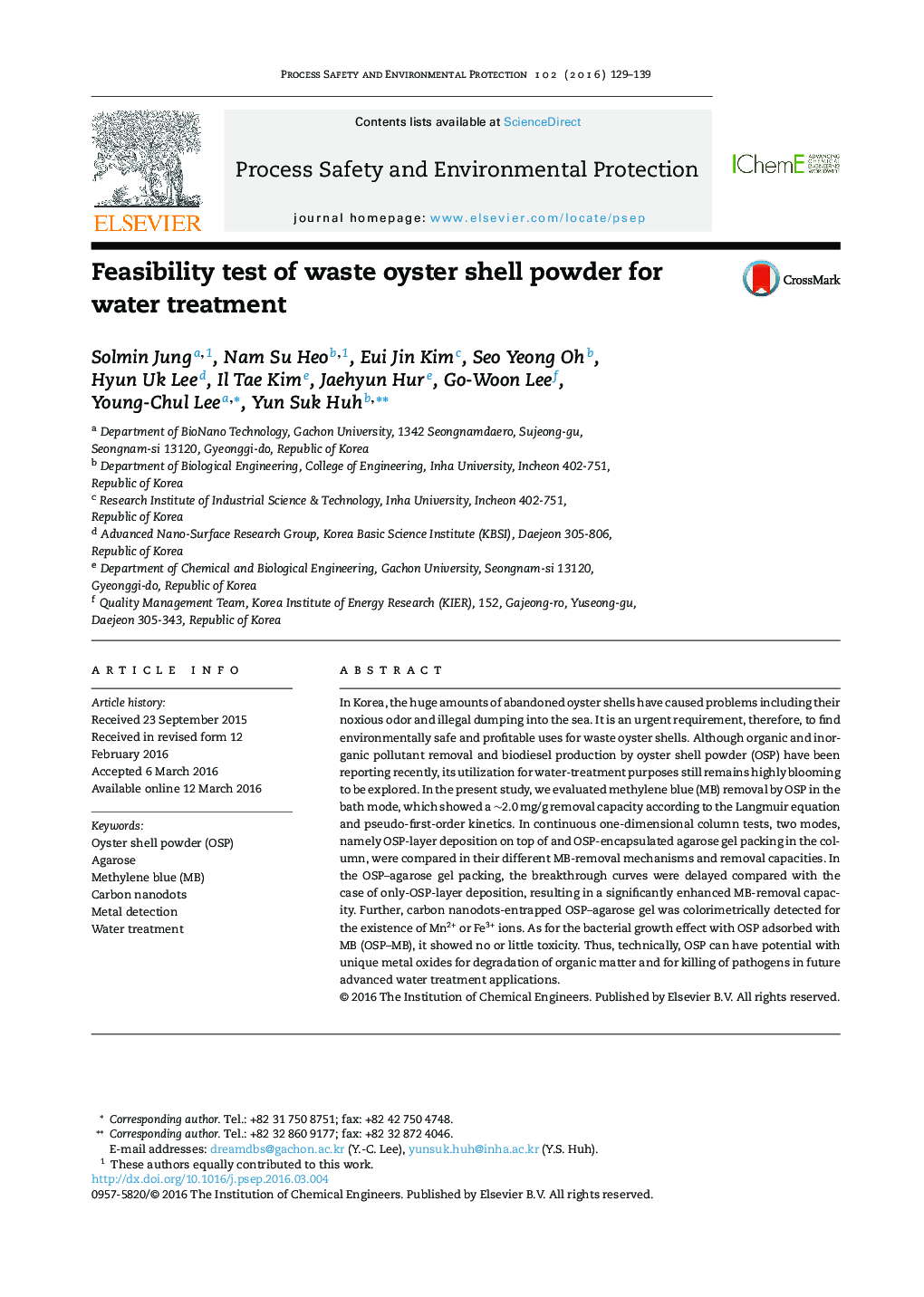| کد مقاله | کد نشریه | سال انتشار | مقاله انگلیسی | نسخه تمام متن |
|---|---|---|---|---|
| 588068 | 1453336 | 2016 | 11 صفحه PDF | دانلود رایگان |
• It is an urgent requirement to find environmentally safe uses for waste oyster shells.
• It is evaluated methylene blue (MB) removal by OSP in the both bath and column mode.
• Carbon nanodots (CDs)–entrapped OSP–agarose gel was colorimetrically detected.
• OSP–MB showed no or little inhibition of bacterial growth.
• Incorporation of unique metal oxides into OSP can be suggested.
In Korea, the huge amounts of abandoned oyster shells have caused problems including their noxious odor and illegal dumping into the sea. It is an urgent requirement, therefore, to find environmentally safe and profitable uses for waste oyster shells. Although organic and inorganic pollutant removal and biodiesel production by oyster shell powder (OSP) have been reporting recently, its utilization for water-treatment purposes still remains highly blooming to be explored. In the present study, we evaluated methylene blue (MB) removal by OSP in the bath mode, which showed a ∼2.0 mg/g removal capacity according to the Langmuir equation and pseudo-first-order kinetics. In continuous one-dimensional column tests, two modes, namely OSP-layer deposition on top of and OSP-encapsulated agarose gel packing in the column, were compared in their different MB-removal mechanisms and removal capacities. In the OSP–agarose gel packing, the breakthrough curves were delayed compared with the case of only-OSP-layer deposition, resulting in a significantly enhanced MB-removal capacity. Further, carbon nanodots-entrapped OSP–agarose gel was colorimetrically detected for the existence of Mn2+ or Fe3+ ions. As for the bacterial growth effect with OSP adsorbed with MB (OSP–MB), it showed no or little toxicity. Thus, technically, OSP can have potential with unique metal oxides for degradation of organic matter and for killing of pathogens in future advanced water treatment applications.
Figure optionsDownload high-quality image (317 K)Download as PowerPoint slide
Journal: Process Safety and Environmental Protection - Volume 102, July 2016, Pages 129–139
